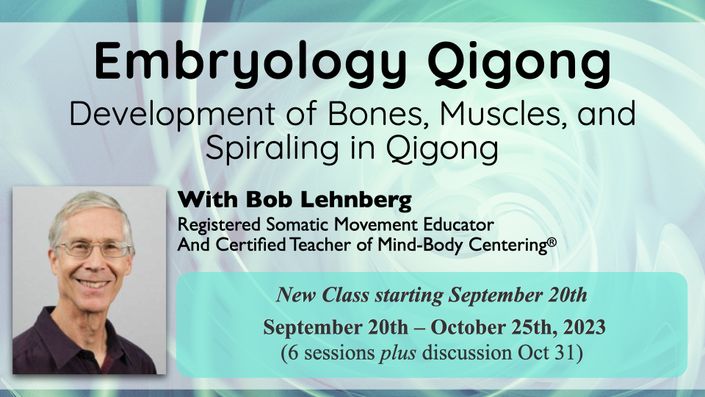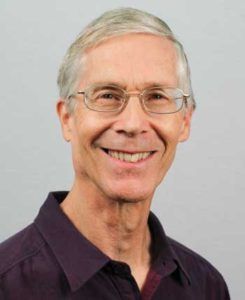
Embryology Qigong: Development of Bones, Muscles, and Spiraling
Qigong forms and embryological processes to deepen our knowledge and practice.
Embryology Qigong
Development of Bones, Muscles, and Spiraling in Qigong
Online Series, Sept 20th – Oct 25th, 2023, 2:00 – 3:30pm Eastern
Additional discussion on the body-mind aspects of our embryology, Oct 31st, 2:00-3:00 pm Eastern
We will learn a short sequence of qigong forms and delve into embryological processes and qigong principles to deepen our knowledge and practice.
The early transition from a soft spine to a contained skeletal spine is essential for integrity of the trunk and flow of expression between core and periphery, from the feet or hips (kwa) to waist, torso and expressed by the hands.
Mesoderm differentiates into our bones, muscles, fibrous connective tissue, and blood. One aspect of embodying mesoderm, particularly muscles, is a fluid rhythmic quality of expanding and condensing. The energy and quality of these tissues is also that of substance in mind and movement. We not only develop our tone or quality of substance within our skin but infuse space with substance as well. We may move our arms and body as though space is empty, or we may align internal and external tone with substance. How do we change tone or density of mind-tissue without adding tension; to balance weight & levity, yin & yang, blood & nerves?
Natural development and movement is spiralic. Spiraling supports qi flow through the whole body. Spirality is innate in the practice of qigong. Spirals and curves develop from linear movement to present more easeful, effortless, and natural expression. This may seem a paradox. Spiral movement or silk reeling, as termed in qigong and taiji, is a practice in and of itself. We can inhabit our early development to support round, spiraling movement within qigong form. The intestines (lower dantian), and heart (middle dantian) are also involved in the expression of spirality.
This highly experiential class will benefit beginners and experienced folks alike. We incorporate moments and transitions based on the embodiment principles of Body-Mind Centering®, embryology, and qigong. Participants will learn theory and receive guidance for simple and safe movements. Original illustrations will show simply, the embryological process.
Class Outline
The discussion topic is around the psychophysical (mind-body) connections and aspects you have experienced during this series. What is your personal relationship to the material and what stories come up for you? No new material will be presented during this one-hour group discussion.
Your Instructor

In 1990, Bob Lehnberg received his certification as Practitioner of Body-Mind Centering® (BMCsm) and in 2002 Teacher of Body-Mind Centering. Since then Bob has received teacher certifications for BMC Yoga, Integral Yoga and Supreme Science of Qigong. He has been teaching in schools of massage therapy and programs of somatic training since 1990 and has had the good fortune to teach BMC and somatic practices throughout the US and internationally in Europe, Canada, China, and Taiwan.
Bob is a co-founder of Kinesthetic Learning Center in Durham, NC and has been on faculty teaching and coordinating the BMC Somatic Movement Educator (SME) and Practitioner certification programs since 2007. He is coordinator of SME courses for Esprit en Mouvement in Montreal, Canada and is Co-director of the SME program in Taitung, Taiwan.
Course Curriculum
-
StartDAY 1: Soft Spine and Contained Spine (91:18)
-
StartDAY 2: Arms Growing and Spiraling (93:27)
-
StartDAY 3: Legs Growing and Spiraling (91:34)
-
StartDAY 4: Mesoderm and Weighted Movement (93:57)
-
StartDAY 5: Mesoderm Rhythm (98:59)
-
StartDAY 6: Review and Putting it Together (91:30)
-
StartEXTRA: Discussion (67:15)
